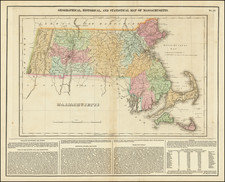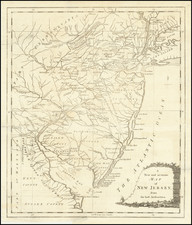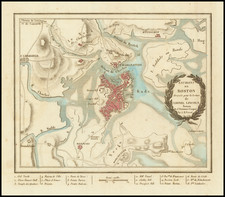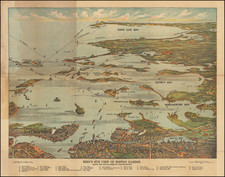Rare early view of the Battle of Lexington, one of the first battles of the American Revolution.
The image shows American militiamen facing off against British regulars, with a number of casualties between the two lines. The tone of the text below shows a decided pro-American sentiment, as it describes the events of April 18, 1775, including the initial battle at Lexington, British march on Concord and subsequent retreat in the face of American resistence.
The text below the title provides a vivid and decidedly anti-British account of Lexington & Concord, which translates as follows:
England, having exhausted the means of disguising the yoke it wanted to impose on its colonies, sent troops to these lands to openly strip them of the privileges they enjoyed. Finally, qualifying them as rebels due to their resistance to its orders, it closed the Port of Boston in June 1774. The Americans believed they should arm themselves to repel arbitrary power and take measures to promptly inform the province of all movements of English troops under the command of Sir Gage, Governor of Boston. To avoid the effect of these precautions, Sir Gage had a detachment of 800 men, under the command of Lieutenant Colonel Smith, embark on the evening of April 18, 1775. They crossed the village of Lexington the next morning and overturned a company of militia that was preparing to parade. This attack by 700 soldiers of regular troops against one hundred militia men, who were neither accustomed nor prepared for combat, was seen as a cold-blooded massacre. Those who escaped spread the alarm, and the English, upon arriving in Concord to seize the Provincial Congress, were repulsed with such vigor that they retreated to Lexington. There they encountered Lord Percy, who had left Boston in the morning with 1,000 men and two field pieces to draw the attention of the Americans and protect Smith's retreat. They stopped for a moment to tend to their wounded, but were attacked again by the Americans, whose numbers had grown. They set fire to the village and hastened their retreat, during which they were beaten and pursued as far as the suburbs of Boston.
The Americans lost about one hundred men on this first day. The English lost two hundred, in addition to over three hundred wounded. Among the prisoners they were taken, there were two officers.
The view appeared in Nicolas Ponce and Francois Godefroy's Recueil d'estampes représentant les différents événements de la guerre qui a procuré l'indépendance aux Etats unis de l'Amérique, first published in Paris in 1783.













![Carte Reduite Des Costes Orientales De L'Amerique Septentrionale . . . contenant L'Isle Royale . . . La Nouvelle Angleterre et la Nouvelle Yorc . . . MDCCLVII [with Plan of Boston Harbor] Plan du Havre de Baston](https://storage.googleapis.com/raremaps/img/small/80006.jpg)
